An important Roman beaker rediscovered, part 1
RSS FeedBridget Johns is a 6th Form student at Lincoln Christ's Hospital School, and is currently undertaking work experience at The Collection. She is helping with the investigation and conservation of a ceramic Roman drinking beaker to enable it to go on display.
Earlier this year fragments of a rare example of a figured Roman colour-coated beaker came to light in the museum stores. Antony Lee, the Collections Access Officer for archaeology, was doing some routine work in the stores when he came across the fragments.
'Whilst reorganising and auditing the ceramics collection I picked up a small cardboard box and noticed parts of figures on the ceramic fragments inside. Later the same day I found another container in the store with some more fragments that looked very similar. Laying them out it was clear that all of the pieces belong to the same vessel, and had at one time been partially reconstructed. On one piece Jupiter's arm holding a thunderbolt was clearly visible and other pieces also indicated that the beaker may have featured more than one deity. It was immediately clear that this is a rare and exciting object and one that I am now keen to get on display in the museum.'
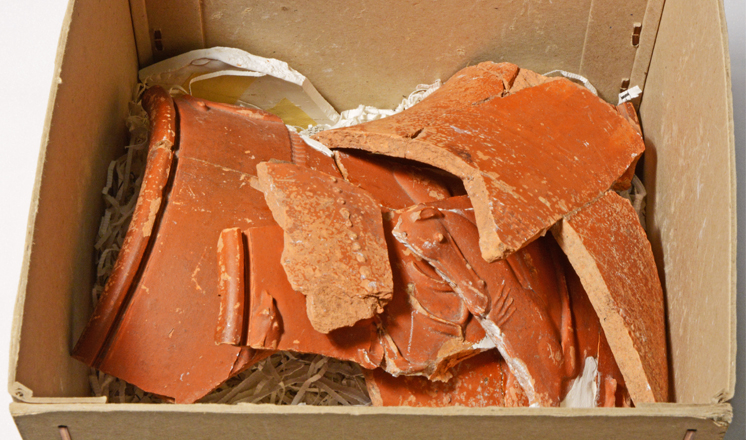
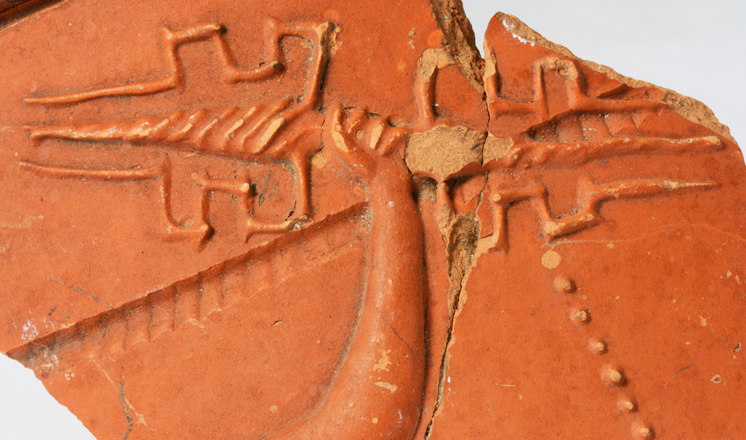
Fragments in box and Jupiter holding thunderbolt
The only clues to the beaker's origin were two words on the box: 'Eastgate' and 'Petch'. A search showed that the vessel did not appear to be listed in the collection database, however further research revealed that Mr D. F. Petch did carry out excavations at the East Gate in Lincoln between 1959 and 1962. Available records of the excavation although containing mention of finding colour-coated ware fragments, could not conclusively confirm that the beaker had been found there.
Examination of the fragments revealed that at least three deities were portrayed on it – Hercules capturing the Ceryneian Hind, Jupiter with thunderbolt and probably Mercury holding a money-bag and possibly a caduceus.
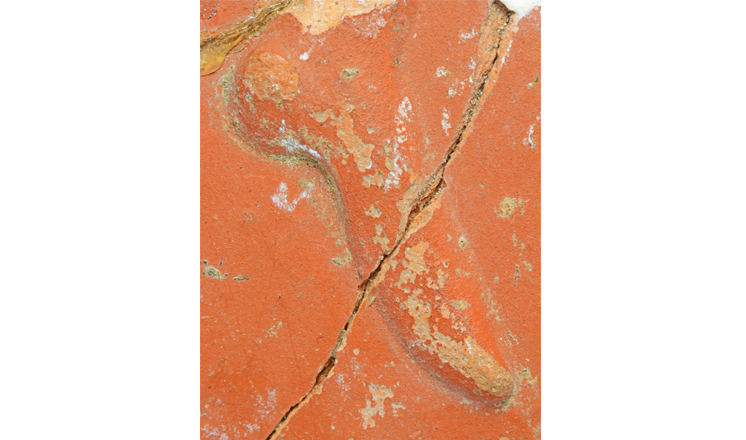
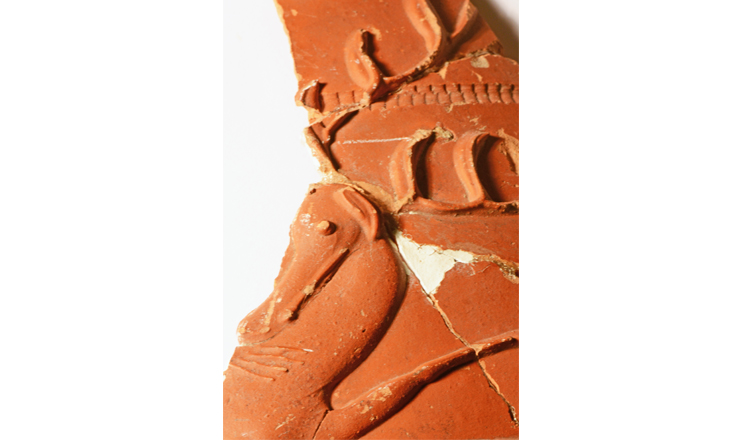
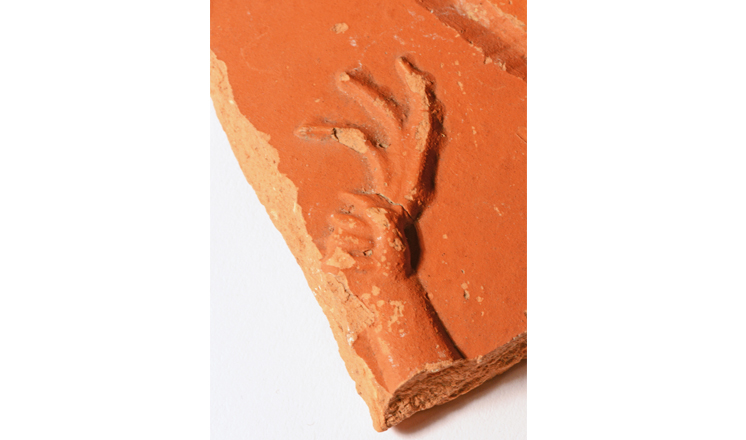
Hercules Foot, Hercules' hand on the Ceryneian hind, Mercury holding moneybag.
Further research produced a reference to an article on the beaker, published in 1989, and regional ceramic specialist Ian Rowlandson was kindly able to provide a copy.
In the article, author Margaret J. Darling confirms that the beaker fragments were found during Petch's excavations, in the north gate tower and also the identification of the deities. She suggests that approximately 50% of the beaker has survived and that it was almost certainly produced in the Nene Valley.
Further reports in this blog series will look in more detail at the excavation, the significance of the beaker and its decoration, and the conservation process.
Comments
There aren’t any comments for this blog yet





